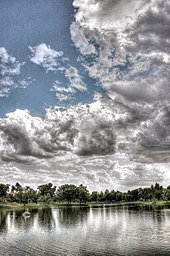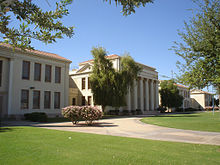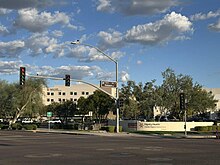

Medical malpractice is a legal term that refers to situations where a healthcare provider, such as a doctor or nurse, fails to provide proper treatment or care to a patient, resulting in harm or injury. This can include errors in diagnosis, treatment, medication dosage, surgical procedures, and more.
Examples of common cases of medical malpractice include misdiagnosis or delayed diagnosis of a serious condition, surgical errors such as operating on the wrong body part or leaving surgical instruments inside a patient's body, medication errors such as prescribing the wrong medication or incorrect dosage, and failure to obtain informed consent from a patient before performing a procedure.
Other examples include birth injuries caused by negligence during childbirth, anesthesia errors leading to complications or death, and failure to monitor a patient's condition properly. These cases can result in serious injuries, disabilities, prolonged recovery times, emotional distress, and even death.
Medical malpractice lawsuits are filed by patients who believe they have been harmed by healthcare providers due to negligence or misconduct. These lawsuits seek compensation for medical expenses, lost wages, pain and suffering, and other damages caused by the malpractice.
It is important for patients to be aware of their rights and options when it comes to medical malpractice. Consulting with a qualified attorney who specializes in medical malpractice cases can help victims understand their legal rights and pursue justice for the harm they have suffered at the hands of negligent healthcare providers.
Medical malpractice lawsuits are a complex and often emotionally charged process that involves many different factors. One of the main factors that contribute to medical malpractice is the failure of healthcare providers to adhere to established standards of care. This can include errors in diagnosis, treatment, medication administration, or surgical procedures.
Another factor that can lead to medical malpractice is poor communication between healthcare providers and patients. Miscommunication can result in misunderstandings about treatment options, risks, and potential outcomes, leading to patient harm.
Additionally, issues with documentation and record-keeping can also play a role in medical malpractice cases. Inaccurate or incomplete medical records can make it difficult for healthcare providers to provide appropriate care and can also hinder efforts to investigate potential instances of malpractice.
Other factors that may contribute to medical malpractice include inadequate staffing levels, lack of training or supervision for healthcare providers, and systemic issues within healthcare organizations that prioritize profits over patient safety.
Overall, medical malpractice lawsuits are a result of multiple factors coming together to create a situation where patients are harmed due to negligence or misconduct on the part of healthcare providers. By understanding these factors and working to address them, we can help prevent future instances of medical malpractice and ensure better outcomes for all patients.

Understanding medical malpractice laws in Chandler is crucial for both healthcare professionals and patients alike.. These laws are in place to protect individuals from negligence or misconduct on the part of medical practitioners, ensuring that they receive the quality care they deserve. In Chandler, medical malpractice laws outline the responsibilities and obligations of healthcare providers, as well as the rights of patients who have been harmed by their actions.
Posted by on 2024-11-18

If you believe that you have been a victim of medical malpractice, it can be a confusing and overwhelming experience.. It is important to take certain steps to protect your rights and seek justice for any harm that may have been caused by negligent medical care. The first step you should take if you suspect medical malpractice is to gather all relevant documentation related to your medical treatment.
Posted by on 2024-11-18

Choosing the right medical malpractice lawyer in Chandler can be a daunting task, but it is crucial to ensure that you receive the best possible representation for your case.. With so many options available, it's important to take the time to research and find a lawyer who has the knowledge and experience needed to handle your specific situation. One of the first things to consider when selecting a medical malpractice lawyer is their experience in handling similar cases.
Posted by on 2024-11-18

Medical malpractice cases can take many forms, but there are several common types that we see in Chandler and throughout the healthcare system.. These cases often involve a breach of the standard of care that a healthcare provider is expected to provide to their patients. One common type of medical malpractice case is misdiagnosis or delayed diagnosis.
Posted by on 2024-11-18
Filing a medical malpractice lawsuit can be a complex and overwhelming process. There are several important steps that must be followed in order to pursue legal action against a healthcare provider for negligence or misconduct.
The first step in filing a medical malpractice lawsuit is to consult with an experienced attorney who specializes in this area of law. A lawyer will be able to review your case and determine whether you have grounds for a lawsuit. They will also help you gather the necessary evidence to support your claim, such as medical records, expert testimony, and witness statements.
Once you have retained legal counsel, the next step is to officially file a complaint with the court. This involves submitting a formal document outlining the details of your case, including the identity of the parties involved, the alleged acts of negligence, and the damages you are seeking. The defendant will then have an opportunity to respond to the complaint.
After the complaint has been filed, both parties will engage in a process known as discovery. During this phase, each side will exchange information and evidence relevant to the case. This may include depositions, interrogatories, and requests for documents.
Once discovery is complete, the case will proceed to trial. At trial, both sides will present their arguments and evidence before a judge or jury. The outcome of the trial will determine whether or not you are entitled to compensation for your injuries.
If you are successful in proving your case, you may be awarded damages to cover medical expenses, lost wages, pain and suffering, and other losses resulting from the malpractice. However, it is important to keep in mind that not all medical malpractice lawsuits result in a favorable outcome.
In conclusion, filing a medical malpractice lawsuit requires careful preparation and expert legal guidance. By following these steps and working closely with your attorney, you can increase your chances of obtaining justice and holding negligent healthcare providers accountable for their actions.

When it comes to proving medical malpractice in a lawsuit, there are certain legal requirements that must be met in order to have a successful case. One of the key elements that must be established is that there was a doctor-patient relationship in which the healthcare provider owed a duty of care to the patient. This means that the doctor had a responsibility to provide treatment in accordance with accepted medical standards.
Another requirement is showing that the healthcare provider breached this duty of care by acting negligently or failing to meet the standard of care expected in their profession. This could include misdiagnosis, surgical errors, medication mistakes, or other forms of medical negligence.
In addition, it must be proven that this breach of duty directly caused harm to the patient. This can sometimes be challenging, as it requires demonstrating a clear link between the healthcare provider's actions and the patient's injury or worsening condition.
Finally, damages must be shown in order to recover compensation for the harm suffered as a result of the medical malpractice. These damages can include medical expenses, lost wages, pain and suffering, and other related costs.
Overall, proving medical malpractice requires meeting these legal requirements and presenting evidence to support each element of the case. It is important to seek out experienced legal representation to help navigate this complex process and ensure that your rights are protected.
In medical malpractice cases, potential damages and compensation play a crucial role in providing justice to the victims of medical negligence. When a healthcare provider fails to meet the standard of care expected in their profession, it can result in serious harm to the patient.
The potential damages that can be awarded in medical malpractice cases include economic damages such as medical expenses, lost wages, and future care costs. Non-economic damages like pain and suffering, emotional distress, and loss of enjoyment of life may also be awarded to compensate for the physical and emotional toll of the malpractice.
Compensation in medical malpractice cases aims to provide financial support for the victim's recovery and help them move forward with their lives. It can also serve as a deterrent for healthcare providers to ensure they adhere to proper standards of care in the future.
Determining the amount of compensation in a medical malpractice case can be complex and often involves expert testimony from medical professionals. Factors such as the severity of the injury, long-term impact on the victim's life, and evidence of negligence all play a role in calculating fair compensation.
Ultimately, potential damages and compensation in medical malpractice cases are essential for holding healthcare providers accountable for their actions and providing justice for those who have been harmed due to negligence. It is important for victims to seek legal representation to ensure they receive fair compensation for their injuries.
In medical malpractice lawsuits, healthcare providers often employ several common defenses to protect themselves against allegations of negligence. One such defense is the argument that the patient's injuries were not caused by the provider's actions, but rather by pre-existing conditions or other factors beyond their control. Providers may also claim that they followed standard protocols and procedures in treating the patient, and that any adverse outcomes were simply unavoidable risks of the treatment.
Another common defense is the assertion that the patient failed to follow instructions or adhere to treatment plans, leading to their own injuries. Providers may argue that they provided sufficient information and warnings about potential risks, and that any harm suffered was a result of the patient's noncompliance.
Additionally, healthcare providers may argue that they acted in accordance with accepted medical standards and practices at the time of treatment, and thus should not be held liable for any negative outcomes. This defense relies on expert testimony to demonstrate that the provider's actions were in line with what would be expected from a reasonable healthcare professional in similar circumstances.
Overall, these defenses are often used by healthcare providers to shift blame away from themselves and onto other parties, or to demonstrate that they acted reasonably given the information available at the time. While these defenses may help providers avoid liability in some cases, it ultimately falls to the court to determine whether negligence occurred and who should be held responsible for any resulting harm.
Chandler, Arizona | |
|---|---|
City | |
 Aerial view of Chandler | |
 Location in Maricopa County, Arizona | |
| Coordinates: 33°18′N 111°50′W / 33.300°N 111.833°W | |
| Country | United States |
| State | |
| County | Maricopa |
| Founded | May 17, 1912 |
| Government | |
| • Type | Council-Manager |
| • Mayor | Kevin Hartke[1] |
| Area | |
| • City | 65.55 sq mi (169.77 km2) |
| • Land | 65.48 sq mi (169.58 km2) |
| • Water | 0.07 sq mi (0.18 km2) |
| Elevation | 1,211 ft (370 m) |
| Population (2020)[2] | |
| • City | 275,987 |
| • Estimate (2022)[2] | 280,711 |
| • Rank | US: 78th |
| • Density | 4,226.4/sq mi (1,627.45/km2) |
| • Metro | 4,948,203 |
| • Demonym | Chandlerite |
| Time zone | UTC−7 (MST (no DST)) |
| ZIP Codes | 85224, 85225, 85226, 85286, 85248, 85249 |
| Area code | 480 |
| FIPS code | 04-12000 |
| GNIS feature ID | 2409433[3] |
| Website | www |
Chandler is a city in Maricopa County, Arizona, United States, and a suburb in the Phoenix-Mesa-Chandler Metropolitan Statistical Area. It is the fourth-most populous city in Arizona, after Mesa, Tempe, and Phoenix. Chandler is considered to be a part of the East Valley.
As of the 2020 census, the population of Chandler was 275,987,[2] up from 236,123 at the 2010 census.[4] Chandler is a commercial and tech hub for corporations like Intel, Northrop Grumman, Wells Fargo, PayPal and Boeing.
In 1891, Dr. Alexander John Chandler, a Canadian and the first veterinary surgeon in the Arizona Territory, settled on a ranch south of Mesa and studied irrigation engineering. By 1900, he had acquired 18,000 acres (73 km2) of land and began drawing up plans for a town-site on what was then known as the Chandler Ranch. The town-site office opened on May 16, 1912.
The original town-site was bounded by Galveston Street to the north, Frye Road to the south, Hartford Street to the west, and Hamilton Street to the east.[5] By 1913, a town center was established, featuring the Hotel San Marcos, which also had the first grass golf course in the state. Chandler High School was established in 1914. Chandler was officially incorporated on February 16, 1920, after 186 residents petitioned the Maricopa County Board of Supervisors to approve incorporation.[citation needed]
Most of Chandler's economy was sustained during the Great Depression (though the Depression was to blame for the cancellation of a second San Marcos hotel), but the cotton crash a few years later had a much deeper impact on the city's residents. A. J. Chandler lost his San Marcos hotel to creditors as a result.[6] Later, the founding of Williams Air Force Base in 1941 led to a small surge in population, but Chandler still only held 3,800 people by 1950.[citation needed]
By 1980, the population had grown to 30,000, and it has since paced the Phoenix metropolitan area's high rate of growth, with suburban residential areas and commercial use areas swallowing former agricultural plots. The population has nearly doubled in the last twenty years. Some of this growth was fueled by the establishment of manufacturing plants for communications and computing firms such as Microchip, Motorola and Intel.
According to the 2020 census, Chandler has a total area of 65.55 square miles (169.8 km2), of which 0.07 square miles (0.18 km2), or 0.11%, are listed as water.[2] The center of the city, along Arizona State Route 87, is 22 miles (35 km) southeast of Downtown Phoenix.
Chandler is in proximity to/borders the San-Tan mountain range. The San-Tan mountains are in the jurisdiction of the Gila River Indian Community.
Chandler is divided into three parts: North Chandler, West Chandler and South Chandler, each being divided by the Loop 202 (Santan Freeway) and Loop 101 (Price Freeway).
| Climate data for Chandler, AZ | |||||||||||||
|---|---|---|---|---|---|---|---|---|---|---|---|---|---|
| Month | Jan | Feb | Mar | Apr | May | Jun | Jul | Aug | Sep | Oct | Nov | Dec | Year |
| Record high °F (°C) | 89 (32) |
95 (35) |
99 (37) |
106 (41) |
118 (48) |
116 (47) |
119 (48) |
115 (46) |
113 (45) |
107 (42) |
97 (36) |
86 (30) |
119 (48) |
| Mean daily maximum °F (°C) | 67 (19) |
71 (22) |
77 (25) |
85 (29) |
94 (34) |
104 (40) |
106 (41) |
104 (40) |
99 (37) |
89 (32) |
75 (24) |
67 (19) |
87 (30) |
| Daily mean °F (°C) | 54 (12) |
58 (14) |
63 (17) |
70 (21) |
78 (26) |
87 (31) |
92 (33) |
90 (32) |
85 (29) |
74 (23) |
61 (16) |
54 (12) |
72 (22) |
| Mean daily minimum °F (°C) | 41 (5) |
45 (7) |
49 (9) |
54 (12) |
61 (16) |
70 (21) |
77 (25) |
76 (24) |
70 (21) |
59 (15) |
47 (8) |
40 (4) |
57 (14) |
| Record low °F (°C) | 15 (−9) |
19 (−7) |
24 (−4) |
30 (−1) |
37 (3) |
43 (6) |
54 (12) |
51 (11) |
40 (4) |
30 (−1) |
22 (−6) |
17 (−8) |
15 (−9) |
| Average precipitation inches (mm) | 1.01 (26) |
1.03 (26) |
1.19 (30) |
0.33 (8.4) |
0.17 (4.3) |
0.06 (1.5) |
0.89 (23) |
1.14 (29) |
0.89 (23) |
0.81 (21) |
0.77 (20) |
0.98 (25) |
9.20 (234) |
| Source: The Weather Channel[7] | |||||||||||||
| Census | Pop. | Note | %± |
|---|---|---|---|
| 1930 | 1,378 | — | |
| 1940 | 1,239 | −10.1% | |
| 1950 | 3,799 | 206.6% | |
| 1960 | 9,531 | 150.9% | |
| 1970 | 13,763 | 44.4% | |
| 1980 | 29,673 | 115.6% | |
| 1990 | 89,862 | 202.8% | |
| 2000 | 176,581 | 96.5% | |
| 2010 | 236,123 | 33.7% | |
| 2020 | 275,987 | 16.9% | |
| 2022 (est.) | 280,711 | [8] | 1.7% |
| U.S. Decennial Census[9] | |||
| Race / Ethnicity (NH = Non-Hispanic) | Pop 2000[10] | Pop 2010[11] | Pop 2020[12] | % 2000 | % 2010 | % 2020 |
|---|---|---|---|---|---|---|
| White alone (NH) | 121,168 | 145,724 | 147,119 | 68.62% | 61.72% | 53.31% |
| Black or African American alone (NH) | 5,821 | 10,580 | 15,564 | 3.30% | 4.48% | 5.64% |
| Native American or Alaska Native alone (NH) | 1,628 | 2,715 | 3,850 | 0.92% | 1.15% | 1.39% |
| Asian alone (NH) | 7,345 | 19,119 | 32,710 | 4.16% | 8.10% | 11.85% |
| Pacific Islander alone (NH) | 222 | 365 | 571 | 0.13% | 0.15% | 0.21% |
| Some Other Race alone (NH) | 301 | 369 | 1,237 | 0.17% | 0.16% | 0.45% |
| Mixed Race or Multi-Racial (NH) | 3,037 | 5,443 | 12,679 | 1.72% | 2.31% | 4.59% |
| Hispanic or Latino (any race) | 37,059 | 51,808 | 62,257 | 20.99% | 21.94% | 22.56% |
| Total | 176,581 | 236,123 | 275,987 | 100.00% | 100.00% | 100.00% |
As of the 2022[update] American Community Survey estimates, there were 280,684 people and 106,712 households.[13][14] The population density was 4,276.2 inhabitants per square mile (1,651.1/km2). There were 113,092 housing units at an average density of 1,722.9 per square mile (665.2/km2).[15][16][14] The racial makeup of the city was 56.0% White, 13.4% Asian, 7.6% Black or African American, 4.4% some other race, 1.0% Native American or Alaskan Native, and 0.1% Native Hawaiian or Other Pacific Islander, with 17.5% from two or more races.[14] Hispanics or Latinos of any race were 21.2% of the population.[14]
Of the 106,712 households, 34.4% had children under the age of 18 living with them, 24.2% had seniors 65 years or older living with them, 50.7% were married couples living together, 7.4% were couples cohabitating, 18.3% had a male householder with no partner present, and 23.6% had a female householder with no partner present.[13] The median household size was 2.61 and the median family size was 3.12.[13]
The age distribution was 23.8% under 18, 8.9% from 18 to 24, 27.9% from 25 to 44, 26.4% from 45 to 64, and 13.0% who were 65 or older. The median age was 37.0 years.[17] For every 100 females, there were 105.8 males.[14]
The median income for a household was $98,664, with family households having a median income of $116,362 and non-family households $66,304. The per capita income was $50,247.[18][19] Out of the 279,322 people with a determined poverty status, 7.6% were below the poverty line. Further, 9.3% of minors and 7.6% of seniors were below the poverty line.[20]
In the survey, residents self-identified with various ethnic ancestries. People of German descent made up 13.0% of the population of the city, followed by Irish at 10.1%, English at 8.5%, American at 5.7%, Italian at 4.5%, Polish at 1.9%, Scottish at 1.7%, French at 1.6%, Arab at 1.5%, Sub-Saharan African at 1.5%, Norwegian at 1.2%, Dutch at 1.1%, Swedish at 1.0%, French Canadian at 0.6%, Russian at 0.6%, Scotch-Irish at 0.5%, and Greek at 0.5%.[13]
Computer chip manufacturer Intel has two locations in Chandler. Other high-technology manufacturing firms have partnerships with Chandler,[21] their operations employing approximately 25% of non-government workers in 2007.[22]
Since 2003, more than 2,900 jobs and investments totalling $3 billion have been created along the Price and Santan freeways,[23] in the Price Road Corridor.[24] The 1,300,000-square-foot (120,000 m2) Chandler Fashion Center, opened in 2001.
Companies headquartered in Chandler include Keap, Microchip, and Rogers. Bashas' headquarters is in a county island surrounded by Chandler.
According to the City of Chandler Economic Development Division,[25] leading employers in the city are:
| # | Employer | # of Employees |
|---|---|---|
| 1 | Intel | 12,000 |
| 2 | Wells Fargo | 5,500 |
| 3 | Chandler Unified School District | 4,900 |
| 4 | Bank of America | 3,600 |
| 5 | Chandler Regional Medical Center / Dignity Health | 2,500 |
| 6 | Northrop Grumman | 2,150 |
| 7 | Chandler–Gilbert Community College | 1,900 |
| 8 | City of Chandler | 1,800 |
| 9 | Microchip Technology (HQ) | 1,700 |
| 10 | NXP Semiconductors | 1,700 |
| 11 | PayPal | 1,500 |
| 12 | Insight Enterprises | 1,400 |
| 13 | Microchip Technology | 1,500 |
| 14 | Verizon | 1,400 |
| 15 | Bashas' (HQ and Distribution Center) | 1,100 |

Chandler holds an annual Ostrich Festival at Tumbleweed Park[26] to commemorate when ostrich farms in the area produced plumes for women's hats during the 1910s.[citation needed]
Chandler also holds an annual ceremony to light a tree made from tumbleweeds; a ceremony founded in 1957 when Chandler sought an alternative way to decorate the city during the Christmas holidays.[27]
Venues, galleries and museums include:
Several sites in Chandler are listed on the National Register of Historic Places, including the McCullough–Price House and the San Marcos Hotel.[30]
The Chandler Public Library serves Chandler and the greater East Valley. The main library is in Downtown Chandler, with two branches elsewhere in the city: Sunset, Basha (shared with Basha High School), and Hamilton (shared with Hamilton High School).

Tumbleweed Park hosts the annual Ostrich Festival, the Fourth of July Fireworks Festival and the annual Day of Play. It features a recreational center with equipment suited for fitness.[31]
Hamilton Aquatic Center is a shared-use aquatic facility, located within Hamilton High School's campus.[32]
Nozomi Aquatic Center is a shared-use aquatic facility which includes a 25 yard, 8-lane competition pool.[33]
Veterans Oasis Park is located at the city's highest point, at 1,311 feet (400 m).[34] It includes a wildlife preservation and designated horse and walking trails.[35]
Chandler is represented by a mayor, a vice mayor and five city council members. The vice mayor is elected by the city council from among its members. The mayor, vice mayor and council members represent the entire city and are not elected from districts or wards.[36]
Kevin Hartke was elected to his second term as mayor in 2023.[36]

The north central section of the city and the western "leg" of the city are within Arizona's 4th congressional district, served by Representative Greg Stanton, a Democrat. The rest of Chandler is within Arizona's 5th congressional district, served by Representative Andy Biggs, a Republican.
Chandler's western "leg" and a small, narrow portion of the adjacent northern part of the city are within Arizona's 18th Legislative District, served by Representatives Denise Epstein and Jennifer Jermaine, and Senator Sean Bowie, all Democrats. The rest of the city is in Arizona's 17th Legislative District, served by Representatives Jennifer Pawlik and Jeff Weninger, and Senator J. D. Mesnard, one Democrat and two Republicans.

Chandler is served by the Chandler Unified School District, Kyrene Elementary School District, Tempe Union High School District, Mesa Public Schools, and Gilbert Public Schools.[citation needed]
Catholic and charter schools include Basis Schools, Seton Catholic Preparatory, and Legacy Traditional Schools.[37]
Post-secondary educational institutions located in Chandler include: The University of Arizona Chandler,[38] International Baptist College, and the two-year Chandler-Gilbert Community College, which serves 13,000 students.[37]
Chandler Municipal Airport is a two-runway general aviation facility. Stellar Airpark is a privately owned municipal airport open to the public.

Chandler is served by three limited access highways:
Chandler is served by two single-track branch lines of the Union Pacific Railroad.
Hospitals in Chandler include Chandler Regional Medical Center, and Banner Ocotillo Medical Center.[40][41]
Chandler has two sister cities:[42]